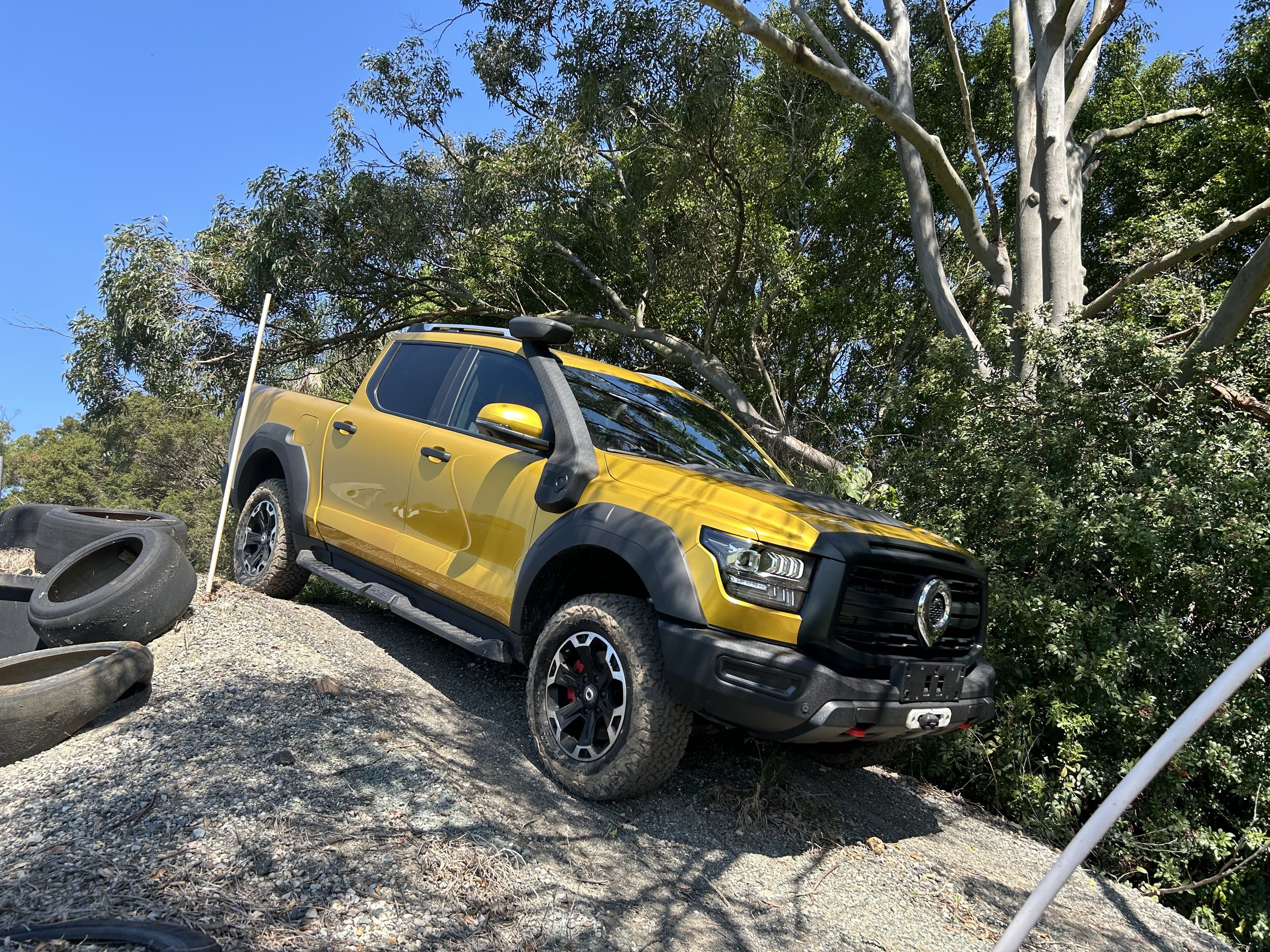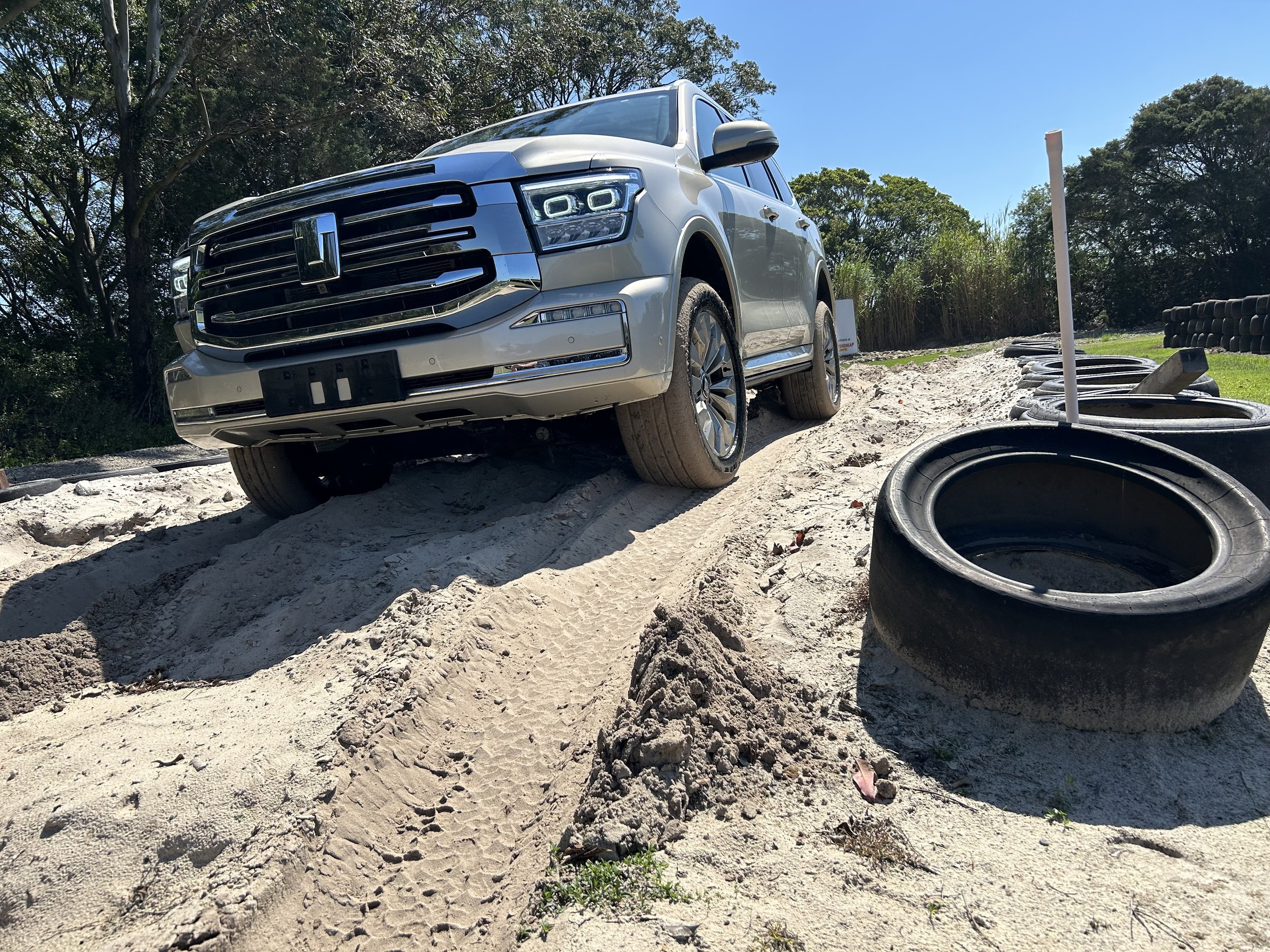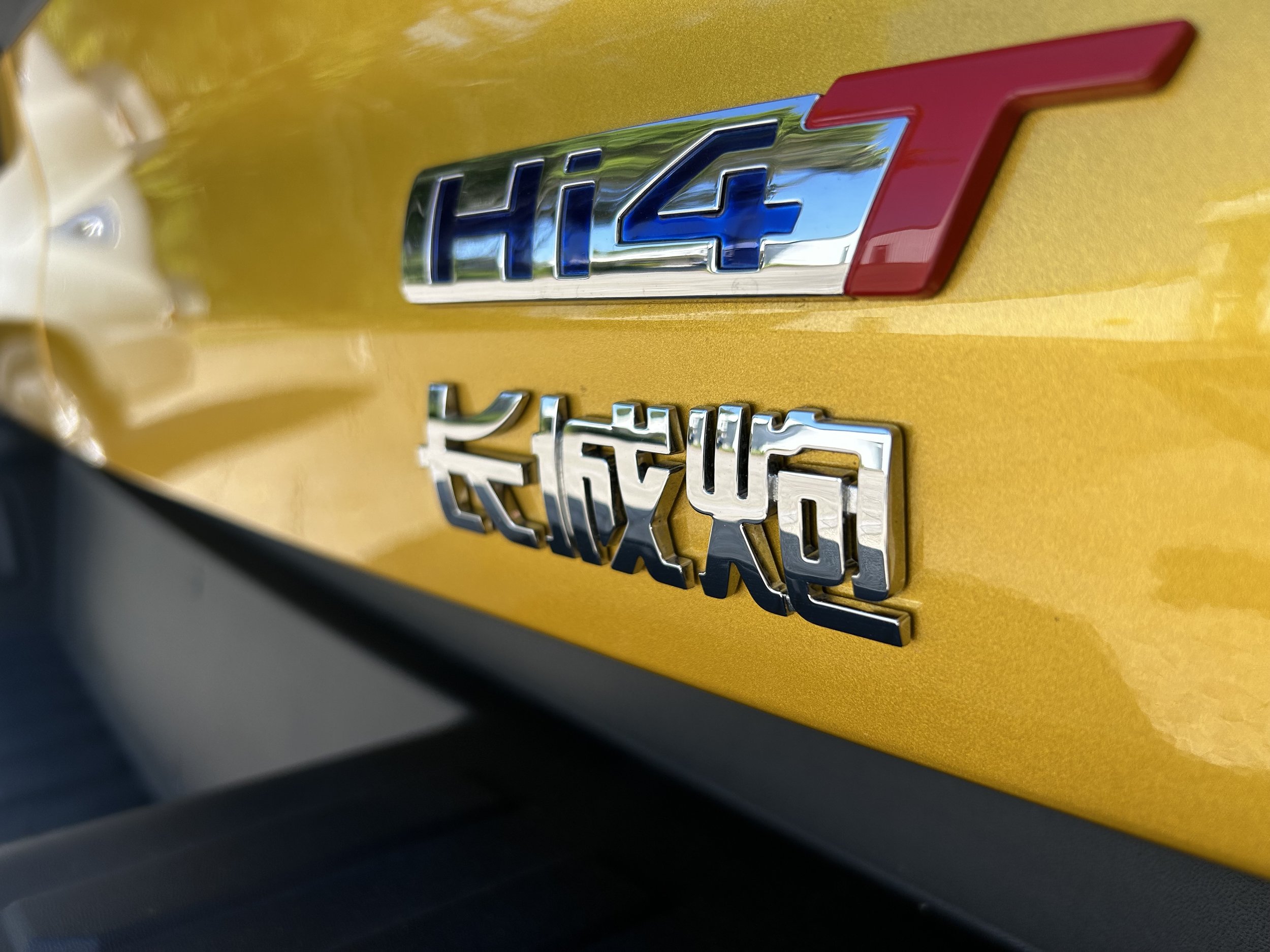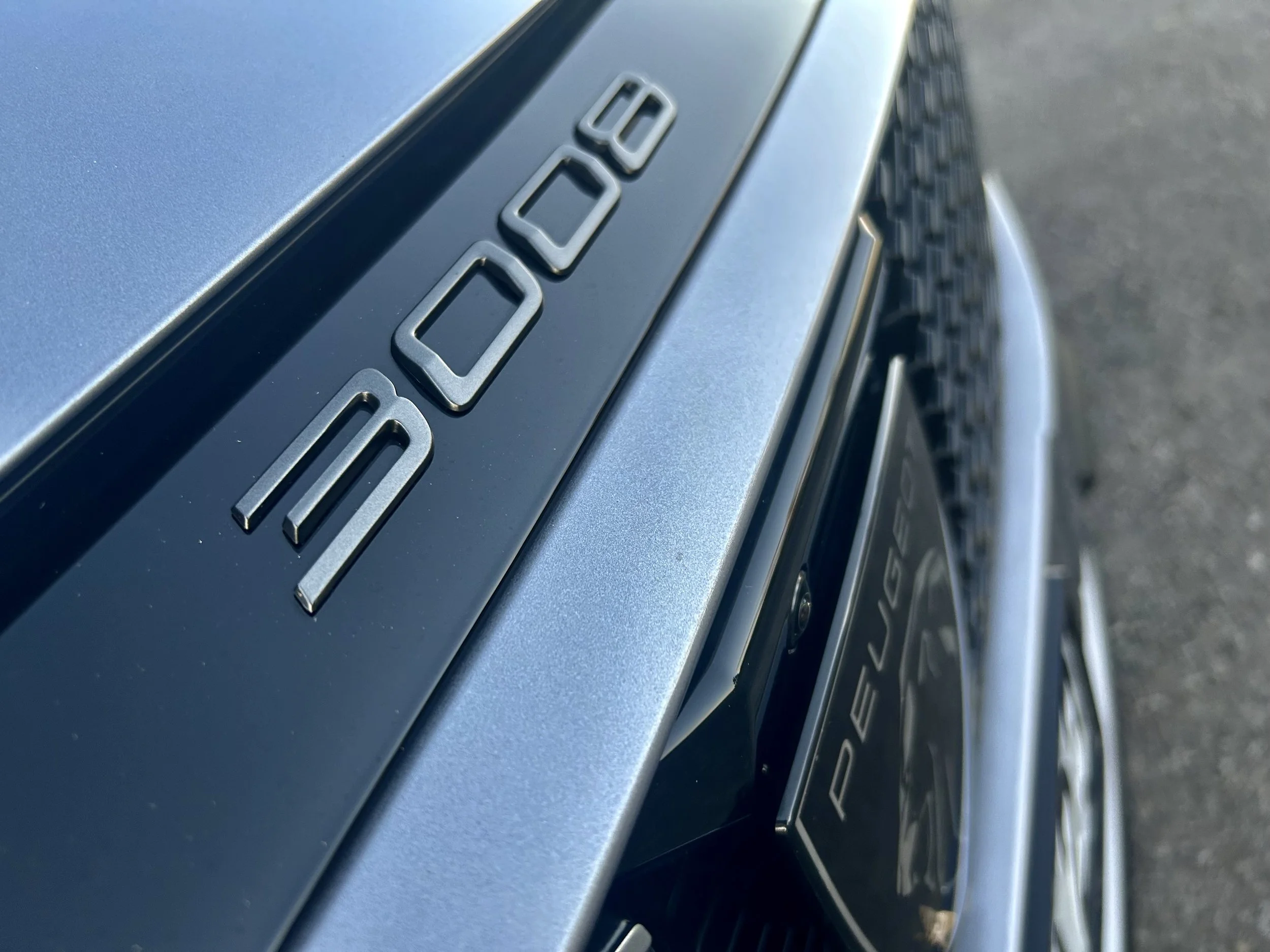GWM Tank 500/ Cannon Alpha PHEV, Ora Lightning first drive: Plugs for play
/Hybrids and full electric have been this make’s thing. Now it’s considering adding the step between those technologies.
GOING off-road promises to be easier with electricity - how far do you take it?
That is, quite literally, the question.
Makers who dare to go there are already taking different routes.
Off-road specialists Jeep and Land Rover already have plug-in hybrid options available and each the latter will soon have full battery electric versions of its ultimate choice Range Rover fare in production. These will be highly off-road capable, because that’s important to the marque, though because these are primarily tall luxury cars, how many will be seen seriously mucking is always highly questionable.
Jeep is still experimenting but, in using the Wrangler as basis for that programme, looks set to deliver a more outdoorsy utilisation. Mercedes has beaten them both, with a battery-reliant G-Class, the modern edition of what we used to call the G-wagen. Rivian is out there - over there - and so too Tesla.
Electric emphatically has off-road application. The addition of electric motors promises to provide additional control and smarts; instant torque from zero has huge potential. Easy to modulate, easy to control. Traction to individual wheels. one day, it’ll be the norm.
In there are now, more are keener on the future norm with the back-up of a reliable power plant from the now. Hybrid spans all levels, from the barely involved with latest Toyotas, to genuine enlivenment, which will be the case with the upcoming BYD Shark, here before next year, and Ford Ranger PHEV, following in early 2025.
Perhaps, too, with the vehicles I’ve just been trialling in Queensland.
Having already placed into the NZ market hybrid powered versions of the platform and powertrain-sharing Cannon Alpha utility and Tank 500 seven seater sports utility wagon, it is now looking to go to the next level with those very same product, but in plug-in hybrid form.
The drivetrains are technically similar, in that they still use a 2.0-litre petrol four-cylinder in conjunction with electric elements. With the PHEV, instead of a 1.76kWh battery, there’s a much larger one, rated at 37.1 kWh gross, feeding a 120kW electric motor.
Those models are already in production and, though sold mainly in China, are also being introduced to some selected international markets.
New Zealand could be one, depending on feedback and finalising acceptance via some regulations that apply in Australia, which would need to be a partner in the on-sale programme to make it work.
Where’s the advantage? It unrolls in many ways.
Using electric to enhance general driving and improve emissions and economy is how the mild - that is, non mains-replenished - hybrid works for the Cannon Alpha and Tank 500 (and 300). It more or less makes those models akin to a diesel, in economy and oomph, and seems to gaining acceptance.
The PHEV is at another level, still. The self-sustaining system with the hybrid as we now have it does not generate enough oomph to move the applicant vehicles more than millimetres on pure electric. The PHEV Cannon and Tank 500 we drove are claimed to achieve 110 kilometres’ fully electric driving.
GWM cites 300kW combined power and 750Nm combined torque, a 45kW and 102Nm lift over the hybrid installation. Tank’s 0-100kmh figure, the only one shared, is 6.9 seconds; a 1.4s advantage. The extra energy is obvious in the enhanced step-off and into the mid-range, transferring via four-wheel-drive with all the same modes as the hybrids.
PHEVs are thrifty, but here fuel burn claims are so big to seem scarcely believable. Can a ute that rates 8.9 litres per 100km as a hybrid really log 1.7 litres per 100km as a PHEV? Curiously, the SUV that is supposedly 0.4L/100km thriftier than the ute without a cable, is thirstier … ut still just with 2.06. Those are Toyota Prius-like accomplishments.
Great figures but, if you know PHEVs, you know how hard it is to get close to optimals and, when you do, it’s only fleeting.
Also, GWM data is based off WLTC or NEDC formulas; these days NZ prefers WLTP. So, ultimately, somehow has to redo the sums to make it truly market relevant.
Tellingly, the GWM data also reflects that, when operating at the opposite end to optimal, with the battery depleted (which it never will be, ever; it’ll just reach the point where it’s low enough the onboard computer annexes the partnership), these models might consume around 8.8 litres per 100km. Still, that’s less than is claimed for the hybrids, and with PHEV 66 grams per kilometre CO2 emission also cites.
You’ll be wondering how applicable this electric side is for driving beyond seal. To put this to the test GWM provided some left-hand drive evaluation units of what it badges ‘Hi4T’ models to test at the Norwell Multiplex, on a closed road circuit and off-road track in Queensland. The PHEV products have all the same driving modes and on and off-road hardware as the hybrids and non-hybrids types. So, a 29.5-degree approach angle, 22-degree rampover angle, and 24-degree departure angle. Standard equipment includes a front diff lock, centre diff lock, and rear diff lock. Also same nine-speed automatic transmission.
Norwell’s test is a roughly one kilometres track packed with undulations, sidings, holes and small peaks, with mud, sand and water crossings.
Consider how the GWM drivetrain is formatted, you might wonder if the electric is more for general driving than absolute all-out mud-slugging.
With Hi4T, electric impetus works in rear and four-wheel-drive, but cancels out in low range. That seems a pity, because conceivably that’s the setting in which electric would be most useful.
As it transpires, that made not a jot of difference on this day. I drove the course first in Low, with the hybrid element abetting the petrol engine. It was fine.
Next time around, the driving was in high range four-wheel-drive. I felt confident it would also get through; though there were two small water crossings, there was plenty of grip even in those. Plus, the Hi4T vehicles have triple diff locks and a very competent electronic traction control.
Sure enough, neither model ever struggled for footing. With the Tank 500, the petrol engine cut in momentarily, for an ascent. With the lighter Cannon, on the same section, it did not. It was silent running all the way. How far it could remain in that condition is something only a far more prolonged evaluation would discover. These were all four minute driving stings, give or take. Potentially, driving under EV power alone will require light-throttle applications. Still, it is progress.
The PHEV implementation is also not all one way. GWM has yet to price it out, but early indication is that having it would lift existing stickers by at least $6000. At the moment, a Tank 500 in highest Ultra spec is a $82,990 prospect. The dearest Cannon Alpha is $68,990.
In additional to adding weight to spending, the PHEV battery pack is significantly larger than that used by the hybrid. In dimension it is basically around the same size as a family chilly bin. Installation on these is at the rear of the ladder chassis (common to both), above the rear axle. This has implications.
One, it is heavy. They say 200kg. On top of that, there’s the unknown kilo count for the electric motor. Tanks are well-named; the 500 is a big chunky thing already. In PHEV form, it’s a 2830kg thing. Then add people, luggage and stuff.
Tank 500 loses its two third-row seats and becomes a five-seat wagon, and fuel tank capacity is reduced by 10 litres to 70 litres. On the upside, this means cargo space of 646 litres with the second row in use and 1400L with the second row folded down.
The battery implicates on the Cannon ute’s payload - down from one tonne to a barely token 535kg - yet, whereas the Tank loses 500kg in towing, to reduce to 3000kg, this Cannon has the same 3500kg capacity as any other.
Notwithstanding, it’s a different ute to what we have, in that this is the ‘Poer' (Mandarin for .. erm, ‘cannon’) version that is GWM’s Ranger Raptor, sort of. It stands taller than the standard Cannon (by 80mm) and the rear end is held up by coil rather than leaf springs.
GWM favours lithium ternary battery chemistry. These vehicles will sustain DC recharging, but the uptake - via a CCS2 outlet - is limited to 50kWh. However, the Hi4T can be charged from 30 percent to 80 percent in around 24 minutes. GWM says Regular AC charging is at a rate of up to 6.6kWh, so that’s an overnight replenishment, from two to 100 percent in around 6.5 hours.
Campers might enjoy that, in addition to EV aptitude the battery is great for vehicle to load functionality and it has a healthy 3.3kWh discharge. GWM says that’s enough to light up a site and keep the fridge cold.
Both models were in China market spec, right down to having badges and on-screen everything in Mandarin. The Poer had a bright yellow interior highlight package on black you surely wouldn’t be aching to see here, the Tank was a more amenable black and tan. Both looked and felt premium, but as with all GWM stuff, some of the plastics are smart in look, cheap to touch. On the other hand, GWM uses very high quality cameras and screens.
GWM had a third vehicle on hand. The Ora Sport, also known as the Lightning Cat/ Next Cat, is the more ambitious punt.
The regional office has been toying with their largest electric four-door fastback sedan for a while. This time last year a single motor in long range (703kms claimed) seemed a better bet. Now the flagship dual motor 07 Performance we got to drive is in the spotlight.
At this level it engages as a low-slung choice with high-echelon sophistication and some of ours, some of theirs styling. So behind the faintly VW-ish Ora face there’s silhouette similarity to a Porsche Panamera and tail-lights borrowed from Bentley.
The demo car’s cabin being in a ‘Trump tan’ trim hue seemed bold statement but it doesn’t shirk high quality materials and seems ergonomically solid. Digital displays are the go, with the driver’s across three individual dials, each with a dedicated function, and most other functionality via the usual iPad on the centre console.
There are no independent crash test scores, just a China Top Safety award, but Ora is proud of a dramatic proof-of-integrity test in which the car launched at 60kmh off a ramp into a pit, flipping several times, after which the doors still opened and there was no fire.
Nothing in the demonstration fleet was road-legal but Norwell’s 2.1 kilometre race track conceivably seemed a good choice for a car packing 300kW/680Nm, a driving position set lower than the rear seat, Michelin Pilot rubber and an electrically-operated adaptive rear spoiler said to increase downforce by 20kg. Conceivably.
The headline 0-100kmh time of 4.3 seconds is enlivening, but the car otherwise struggled to impress. The cited 2100kg weight seems understated; whatever it carries, the weight simply overwhelms dynamic flair even with dampers on firmest ‘supersport’. So-so brake feel and none at all from the steering hardly helped. It needs a retune if it’s to be a foil to the Tesla Model 3, Hyundai Ioniq 6, Polestar 2 and BYD Seal. Also requiring remedying is the recharging speed, which is well short of what those models have.
Markets trends show this year has become a tough one for anything with a plug. Full electric car registrations are down 74 percent year on year, PHEVs aren’t quite as bad, but have become the next hardest hit. Ironically, the mild hybrid zone it already services is the sweet spot for anything with a battery.
Still, ultimately the global trend favours increasing electrification. It’s only sensible to be ready for it.



























